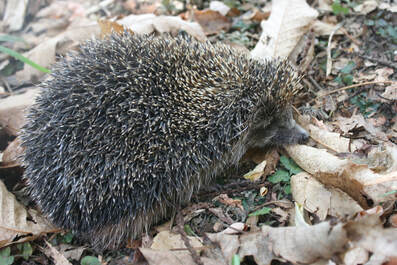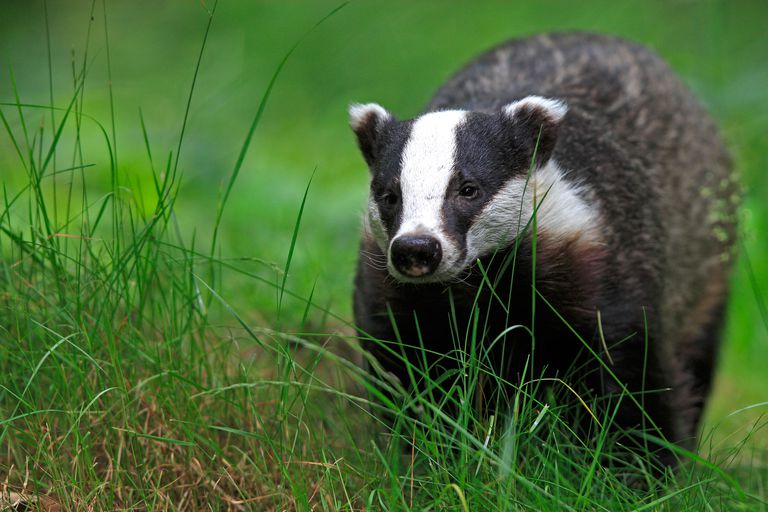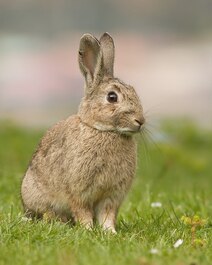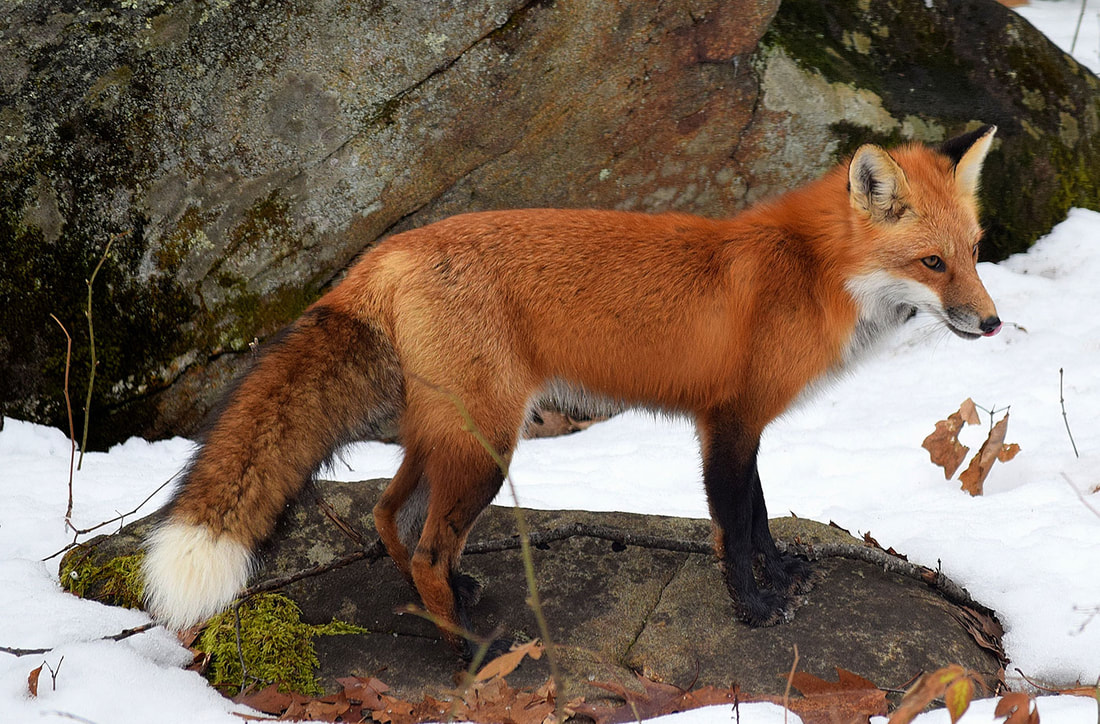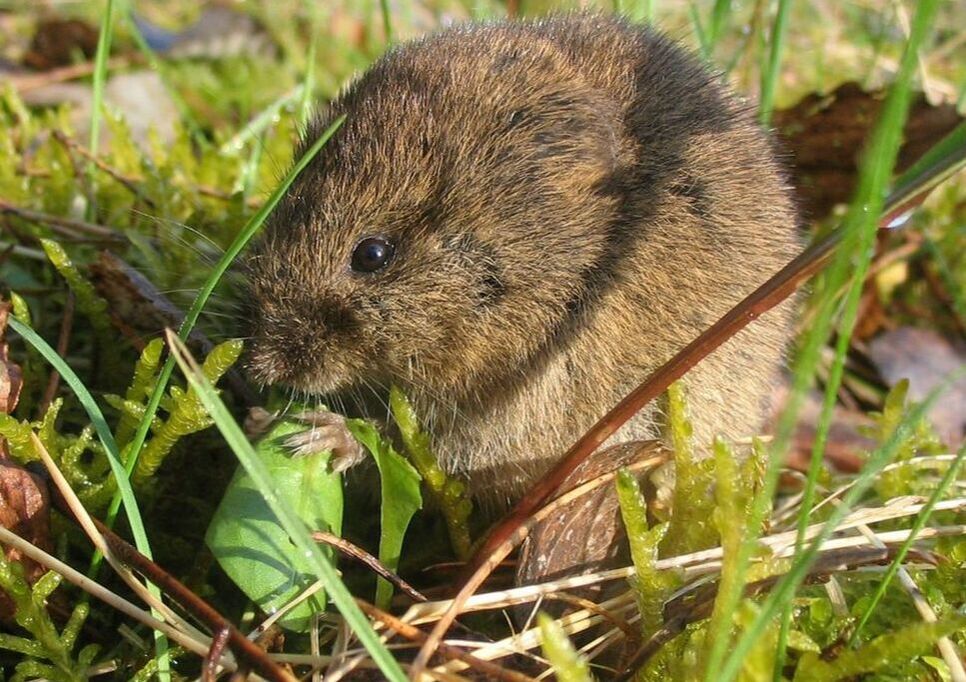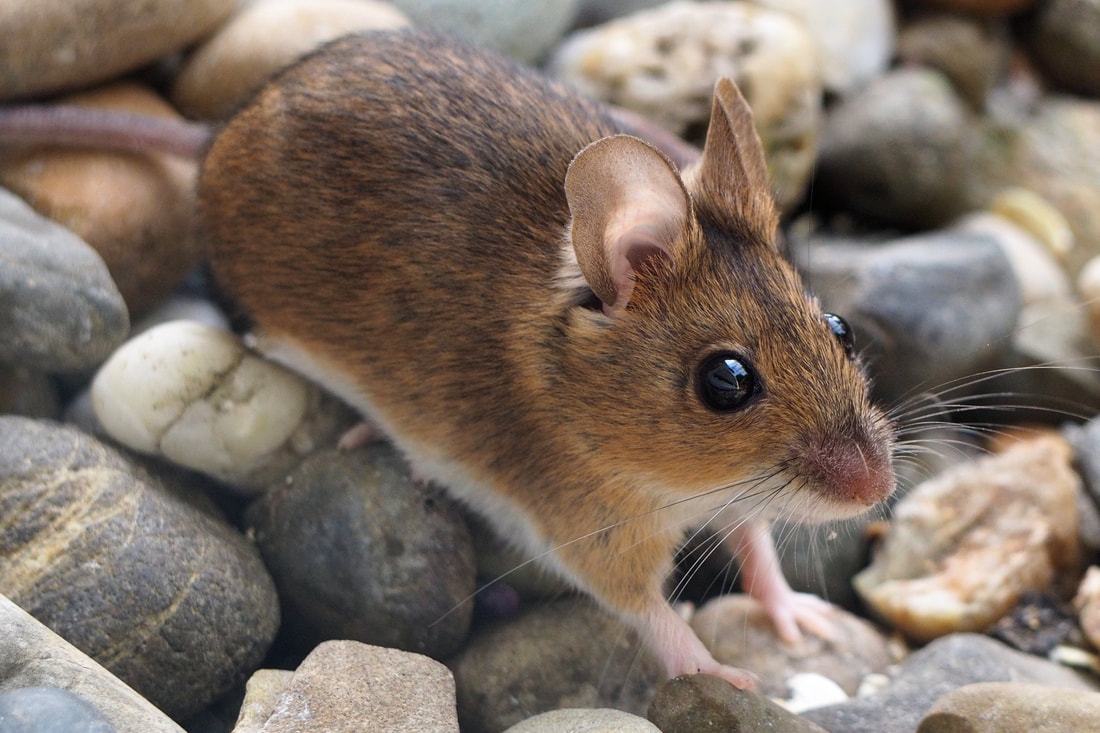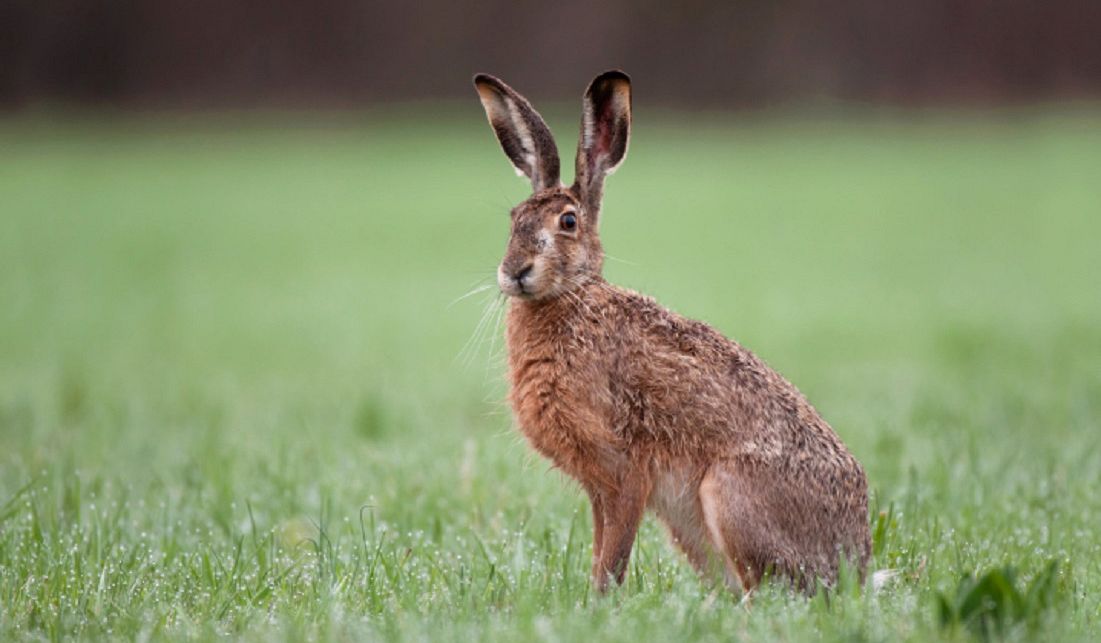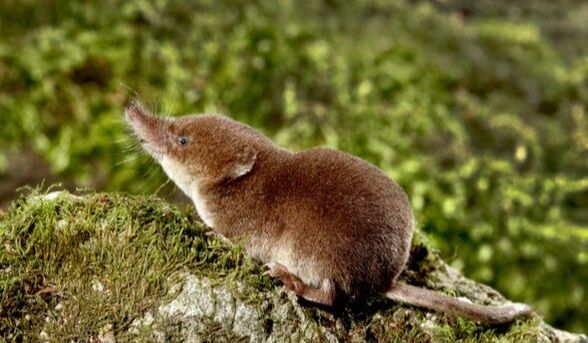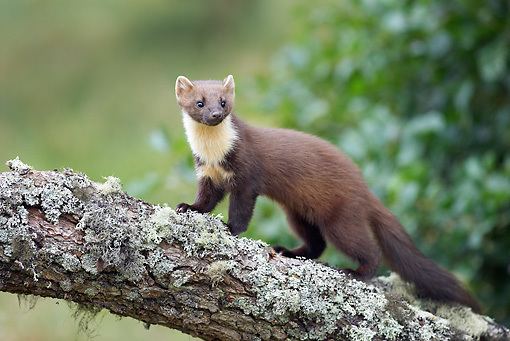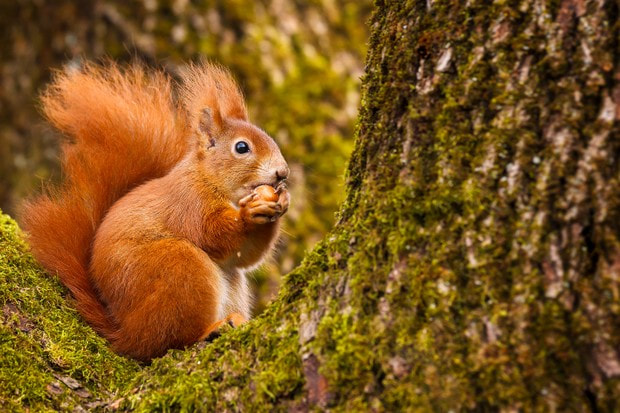European hedgehog - Erinaceus europaeusSize
Range from 24 to 35cm (9.5 – 14 in.) long; 2 to 5 cm (1 – 2 in.) is tail. Weigh between 500g (1 lb) and nearly 2 kg (4.5 lb); weight varies according to sex and season. Habitat Found throughout Europe. It lives in a variety of habitats, including woodlands and grasslands but also frequently in man-made habitats from orchards, vineyards and farmland, to parks and gardens. Diet The European hedgehog is omnivorous, feeding mainly on invertebrates. Its diet includes slugs, earthworms, beetles, caterpillars and other insects. Breeding The breeding season commences after hibernation. Pregnancies peak between May and July, though they have been recorded as late as September. Gestation is 31 to 35 days. The female alone raises the litter which typically numbers between four and six, though can range from two to ten. European badger - Meles melesSize
It is 30 cm tall and 56–81 cm long, excluding the 12–20-cm tail, and weighs 8–10 kg. Habitat They prefer deciduous woods with clearings or open pastureland with small patches of wood. They are also found in a wide variety of temperate ecosystems, mixed and coniferous woodlands, scrub, suburban areas, and urban parks. Diet They are opportunistic foragers that consume fruit, nuts, bulbs, tubers, acorns and cereal crops, as well as invertebrates such as earthworms, insects, snails, and slugs. They also eat small mammals such as rats, voles, shrews, moles, mice, and rabbits. Breeding European Badger Breeding. Mating may occur during any month, although the majority appears to happen between February and September; the bulk of that between February and May. Oestrous (the female's receptive period) is between four and six days, during which a sow may mate with several boars. |
European rabbit - Oryctolagus cuniculusSize
An adult European rabbit can measure 40 centimetres (16 in) in length, and weigh 1,200–2,000 grams (2.6–4.4 lb). The hind foot measures 8.5–10 centimetres (3.3–3.9 in) in length, while the ears are 6.5–7.5 centimetres (2.6–3.0 in) long from the occiput. Habitat They are found in temperate, tropical, and terrestrial habitats in the savanna or grasslands, as well as forests. They can be seen in the grazing lands in the oceanic islands, as well as the dunelands and semi desert. These rabbits prefer dry areas with softer soil for burrowing. Diet European Rabbits feed on a wide range of vegetation including agricultural crops, cereals, cabbages and young trees. During the winter months they eat grasses, bulbs and bark. Breeding The European Rabbit is capable of reproducing year-round, however most of the mating occurs in the first half of the year. Gestation last about 30 days, and litters usually range from 5 to 6 offspring. Females are able to have many litters per year, and it is not uncommon for embryos to be aborted in the womb. Red fox - Vulpes vulpesSize
Depending on geographic location they can vary in size, as body length can range from 45 to 90cm, tail length from 30 to 55cm and body mass from 3 to 14kg. Usually adult male foxes weigh around 6 kg, while females weigh about 5 kg. Habitat Foxes occur in a variety of habitat types, including arctic tundra, desert, temperate forests, boreal forests, meadows, grasslands, agricultural and urban environments. They attain their highest densities in human-dominated habitats. Foxes are not found in tropical climates. Diet Red foxes are solitary hunters who feed on rodents, rabbits, birds, and other small game—but their diet can be as flexible as their home habitat. Foxes will eat fruit and vegetables, fish, frogs, and even worms. If living among humans, foxes will opportunistically dine on garbage and pet food. Breeding The fox's gestation period is 51−53 days. Cubs are generally born in burrows (dens) but litters have been found in hollow trees, rock crevices, under houses or in log piles. Litter size ranges from 4–10. |
Common vole - Microtus arvalisSize
9-11.5cm; tail is <40% of head and body. Weight: 20-40g. Lifespan: The average life span of a field vole is up to 1 year. Habitat Found in both coniferous and deciduous woodland, marsh, heather moorland, rough grassland and arable farmland Diet It is active day and night and eats seeds, roots and leaves. Further up the food chain, it forms an extremely important part of the diet of many predators, such as kestrels, weasels and barn owls. Breeding Field voles breed prolifically, mainly in summer, but often all year round, even under snow. Females produce up to seven litters a year, each averaging from four to six young which are weaned after about fourteen days. The field vole is both widespread and common and is listed as being of "Least Concern" by the IUCN. |
Wood Mouse - Apodemus sylvaticusSize
Wood mice generally weigh between 17–27g as adults (males are usually heavier than females) and can be up to 100mm in length from nose-tip to anus (with their tails almost the same length again). The wood mouse is a mostly nocturnal animal, with a rise in daytime activity occurring during the summer months. Habitat Wood mice inhabit forests, grasslands, and cultivated fields, tending to seek out more wooded areas in winter. Almost entirely nocturnal and terrestrial, wood mice burrow extensively, build nests of plants and live in buildings during harsh seasons. It is one of the most intensively studied species in the genus. Diet Wood mice eat seeds, green plants, fruits and animal foods. In a mixed deciduous woodland they eat acorns, ash and sycamore seeds for most of the winter, buds in early spring, caterpillars, worms and centipedes in early summer and blackberries and fungi in the autumn. Breeding Females have up to six litters a year of between four and eight young, and may even breed over winter if food is abundant. |
European hare - Lepus europaeusSize
In comparison to the rabbit, it is larger in size, has longer ears and longer legs. The European Hare grows to about 50 – 70 centimetres and has a tail length of 7 – 11 centimetres. Habitat European Hares are generally shy mammals, however, their behaviour changes in springtime. Many are seen in broad daylight chasing one another in meadows. This behaviour appears to be competitions between the male European Hares to attain dominance which allows them more access to breeding female European Hares. Diet European hares are primarily herbivorous. They may forage for wild grasses and weeds but with the intensification of agriculture, they have taken to feeding on crops when preferred foods are not available. During the spring and summer, they feed on soy, clover and corn poppy as well as grasses and herbs. Breeding European hares have a prolonged breeding season which lasts from January to August. Females, or does, can be found pregnant in all breeding months and males, or bucks, are fertile all year round except during October and November. |
Common Shrew - Sorex araneusSize
Common shrews are tricoloured: dark brown on the back, pale brown at the sides and whitish underneath, dense velvety fur, with a long pointed nose, tiny eyes, small ears and red teeth. Size: 48-80mm, tail 24-44mm; tail less than 3/4 length of head and body. Weight: 5-14g. Habitat The common shrew is a terrestrial species living almost anywhere and is most commonly found in hedgerows, scrubland, grassland and deciduous woodland. Diet The common shrew's carnivorous and insectivorous diet consists of insects, slugs, spiders, worms, amphibians and small rodents. Shrews need to consume 200 to 300% of their body weight in food each day in order to survive. A shrew must eat every 2 to 3 hours to achieve this goal. Breeding The common shrew breeding season lasts from April to September, but peaks during the summer months. After a gestation period of 24 to 25 days, a female gives birth to a litter of five to seven babies. A female rears two to four litters each year. |
European pine marten - Martes martesSize
An average European pine marten measures between 45 and 58cm (17 to 22in) with the tail adding between 16 and 28cm (6.3 and 11cm) to their length. Due to a large geographical range they can vary greatly in size. Males are often 10-30% larger than females. They weigh between 0.9 and 2kg (2-4.5lbs) on average. Habitat Well suited to a life amongst the trees European pine martens mostly live in forests. They will also venture in to the grasslands adjacent to these areas. Their territory is marked by depositing their feces around the perimeter. Diet The diet of the pine marten includes small mammals, carrion, birds, insects, and fruits. The recovery of the European pine marten has been credited with reducing the population of invasive grey squirrels in the UK and Ireland. Breeding Reproduction in European pine martens is tied closely to the seasonality of their temperate habitats, as it is in many members of the family Mustelidae. Mating and fertilization in July and August is followed by a period of delayed implantation that lasts about seven months. |
Red squirrel - Sciurus vulgaris
Size
The red squirrel has a typical head-and-body length of 19 to 23 cm (7.5 to 9 in), a tail length of 15 to 20 cm (6 to 8 in), and a mass of 250 to 340 g (8.8 to 12.0 oz). Habitat Red squirrels live in trees, so are known as an 'arboreal' mammal. Red squirrels can live in all types of woodland. In more fragmented landscapes such as agricultural and sub-urban areas, they exploit pockets of trees and woodlands connected by hedgerows and other wildlife corridors. Diet The red squirrel eats a wide-variety of foods including insects, seeds, bark, nuts, fruits, mushrooms and pine seeds or cones. Sometimes it eats insects, young birds, mice and rabbits. A large part of its diet is made up of pine seeds. In the fall, it will cut green pine cones from trees and store them in the ground. Breeding The red squirrel breeding season starts with mating chases in January, and a first litter of three to four babies, which are called kittens, is born in March. If a female squirrel gains sufficient food over the summer months, she will have a second litter in July/August. |

